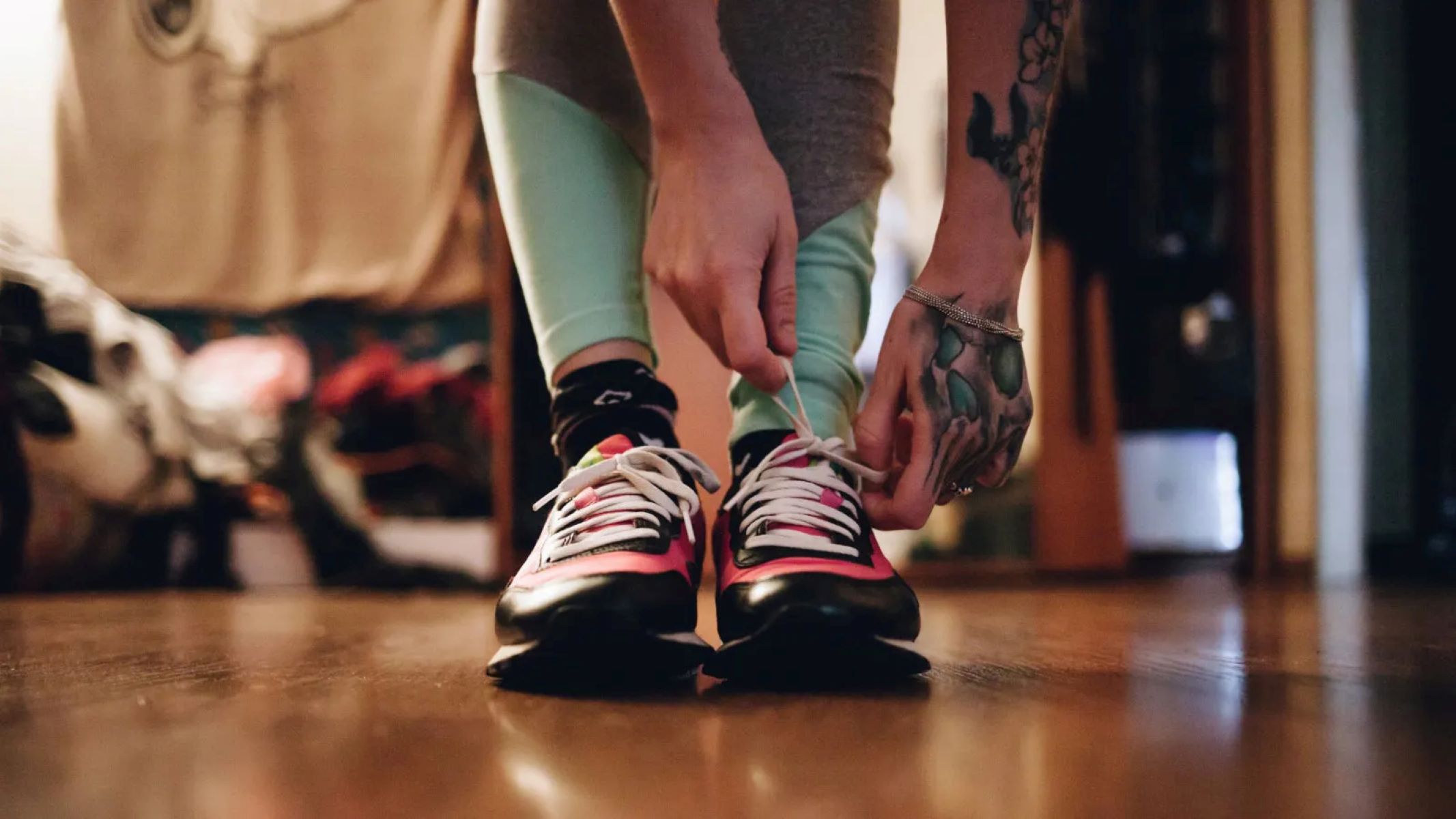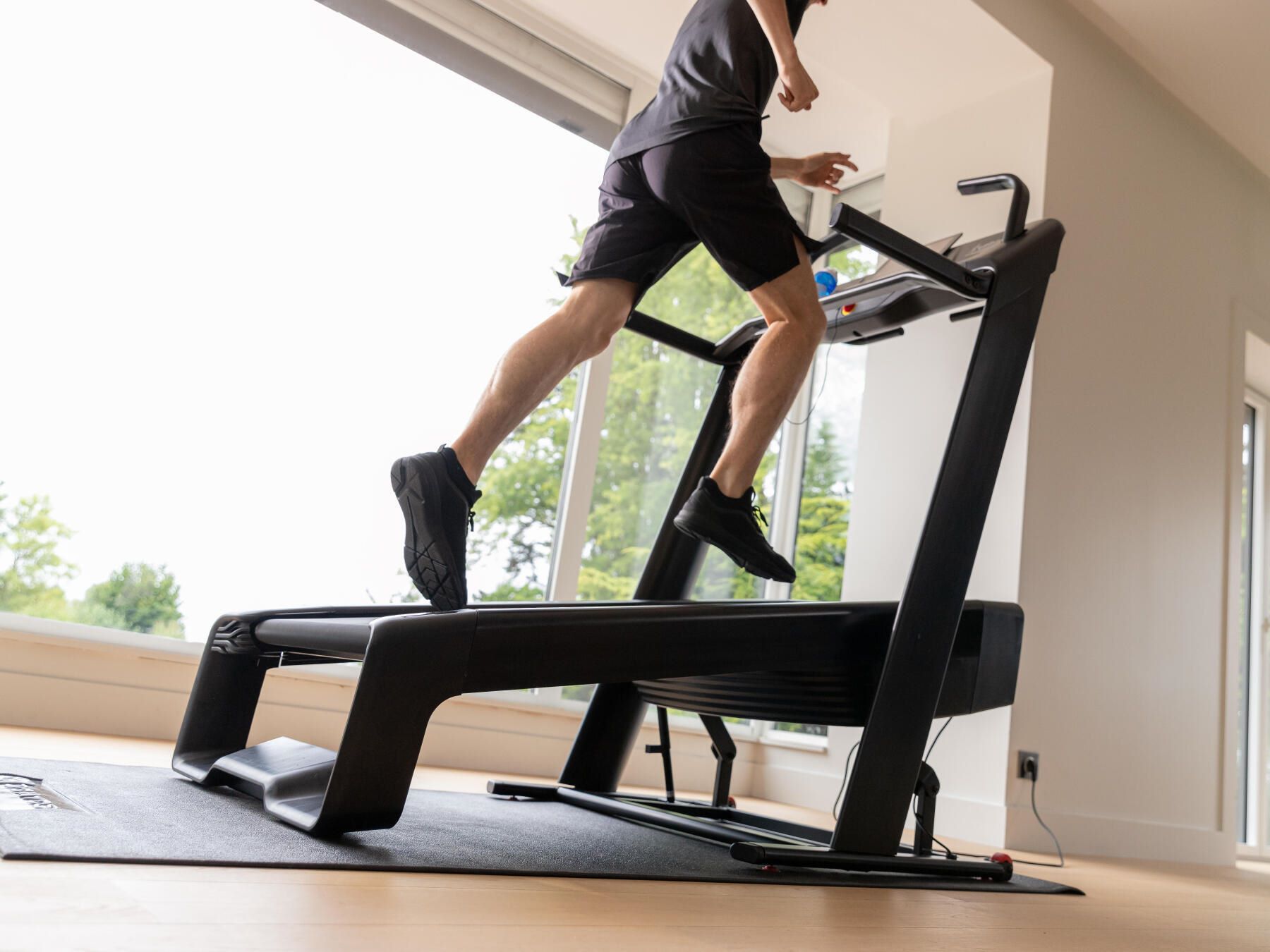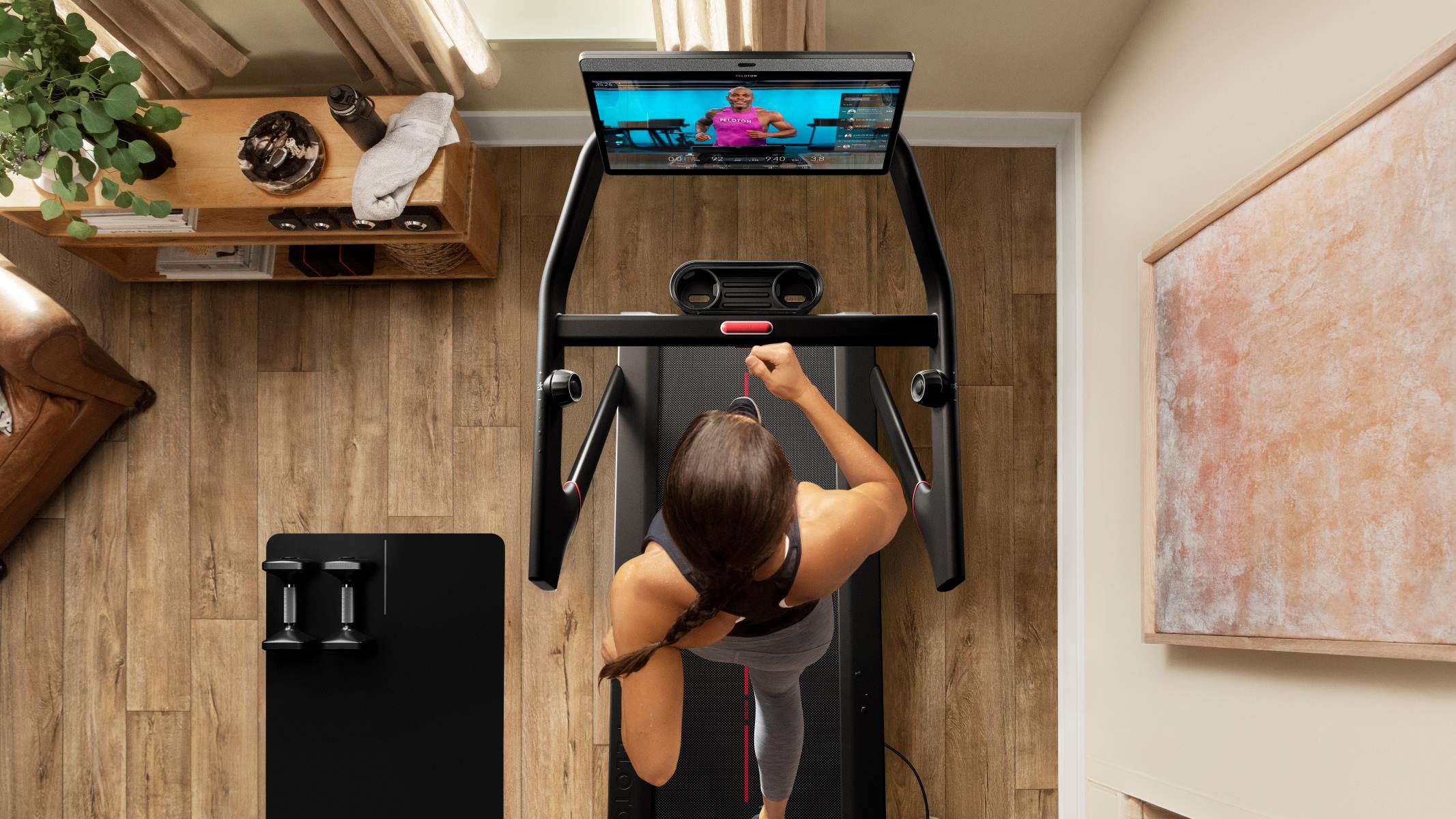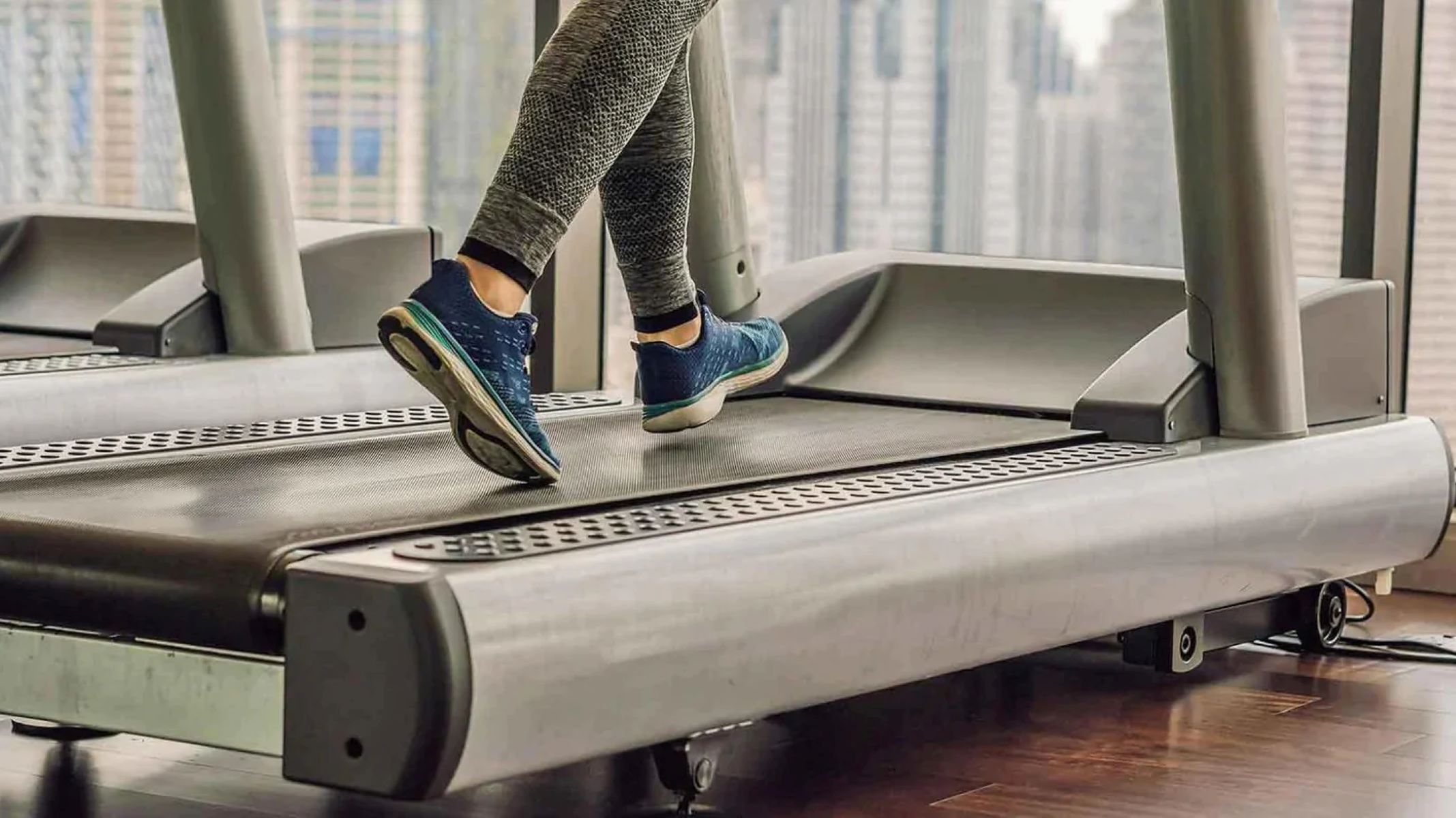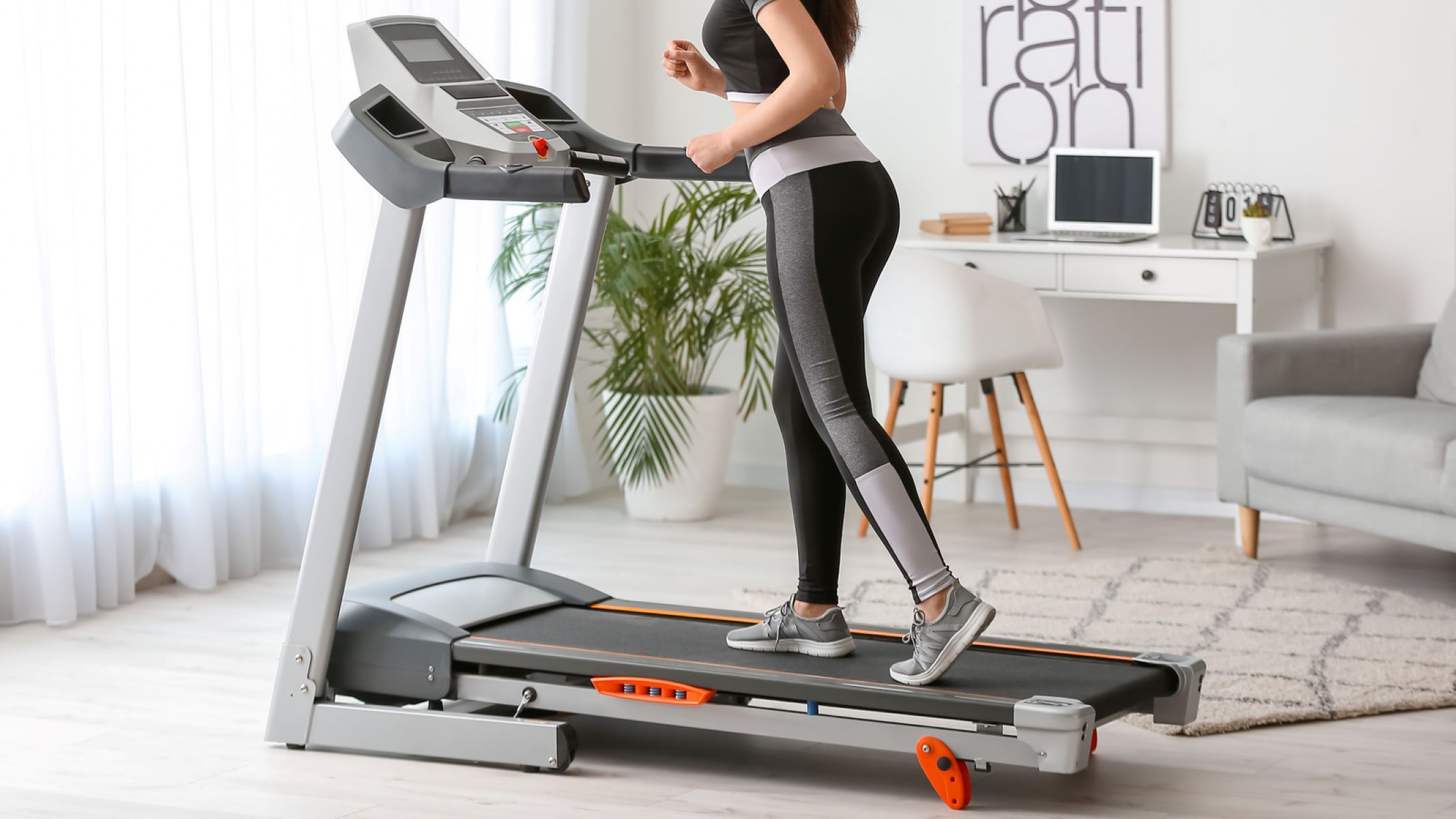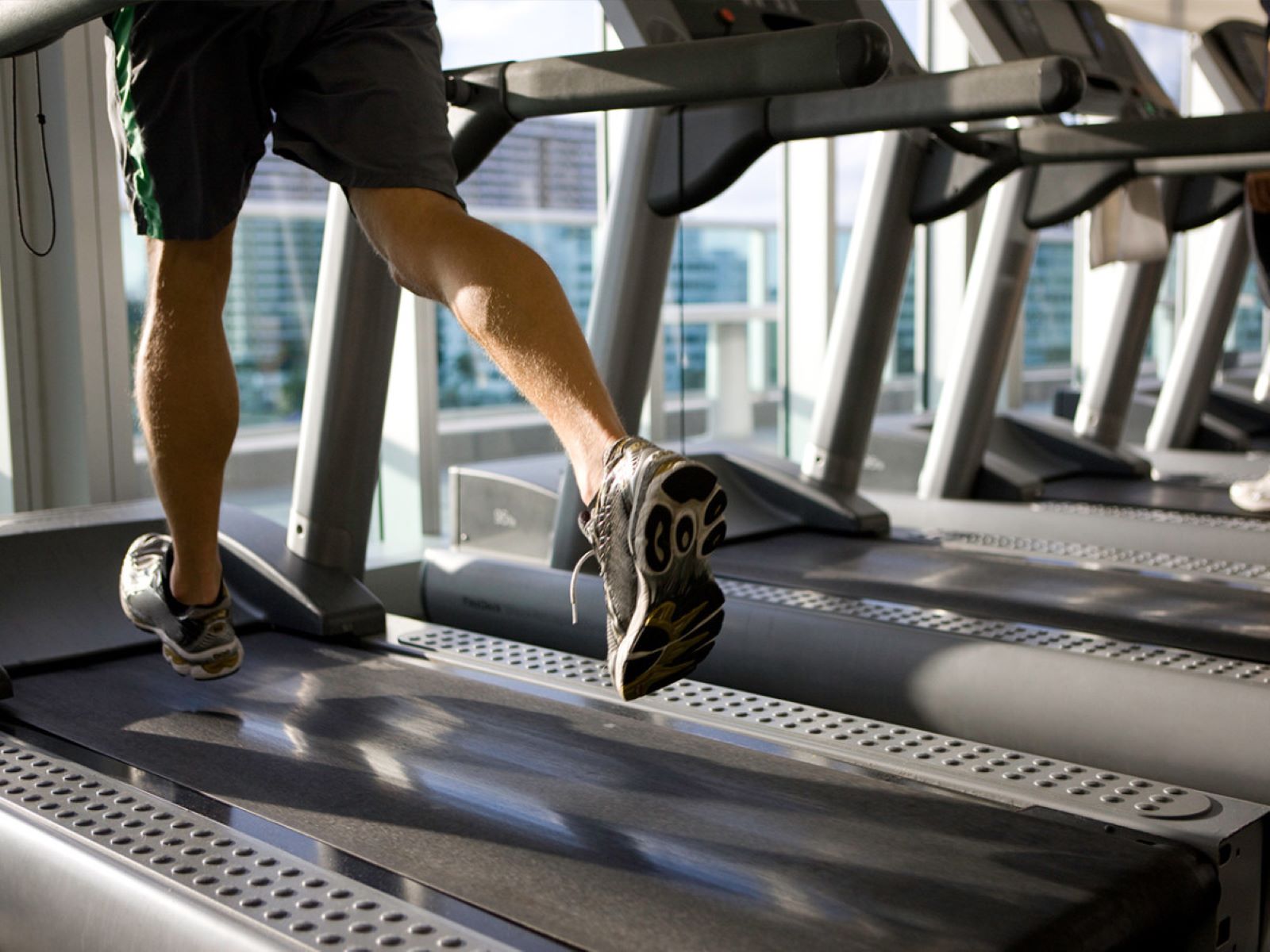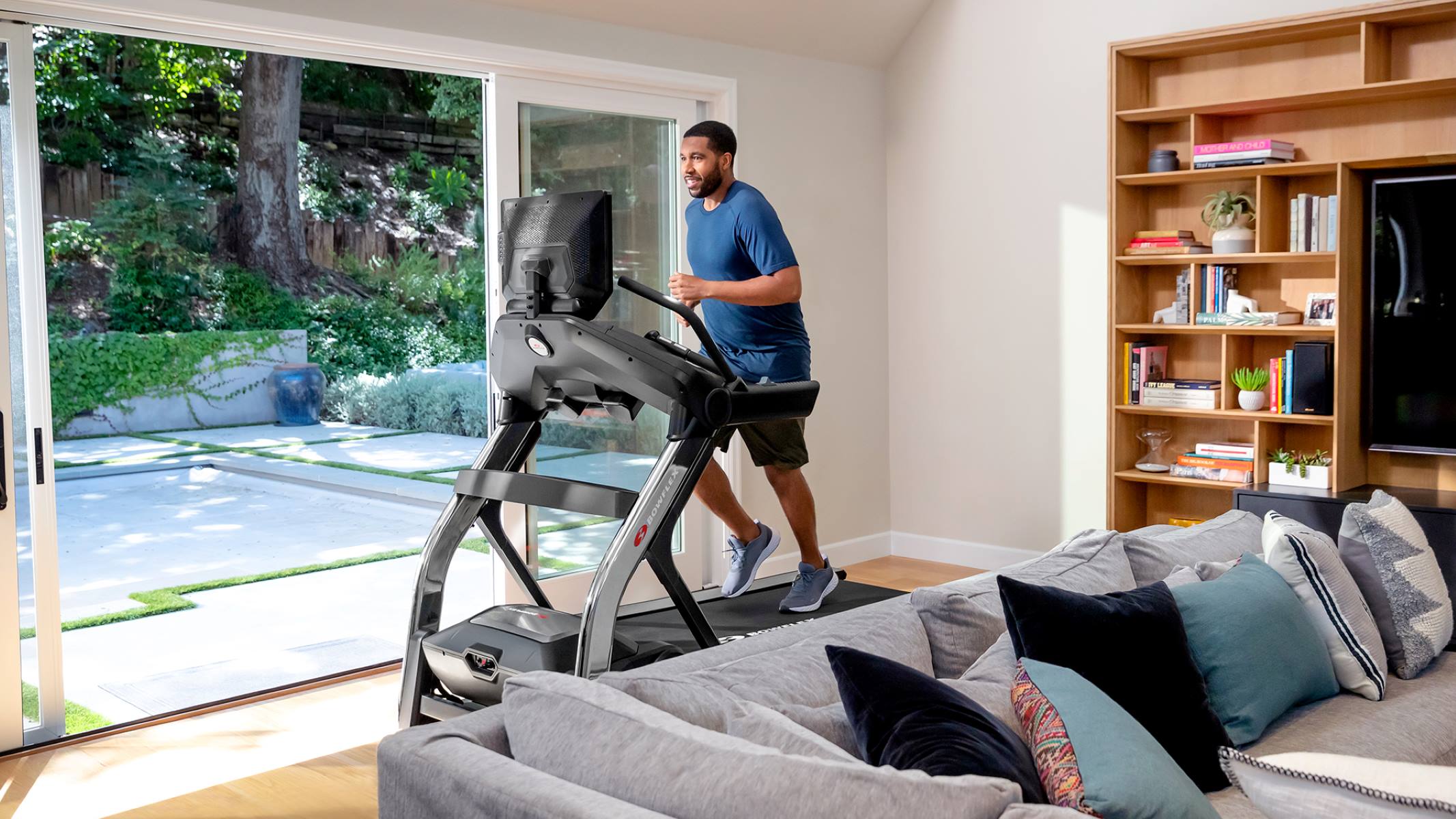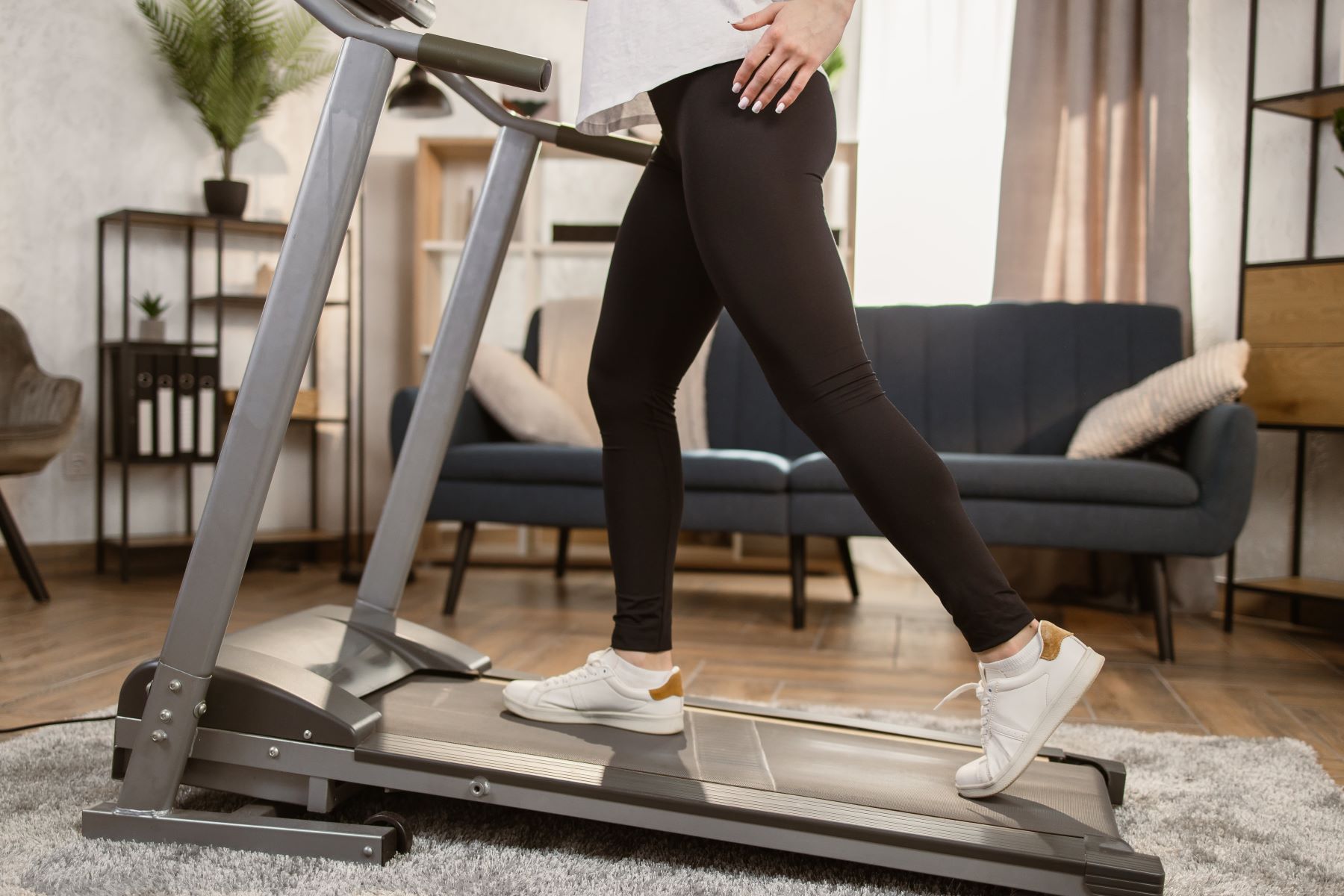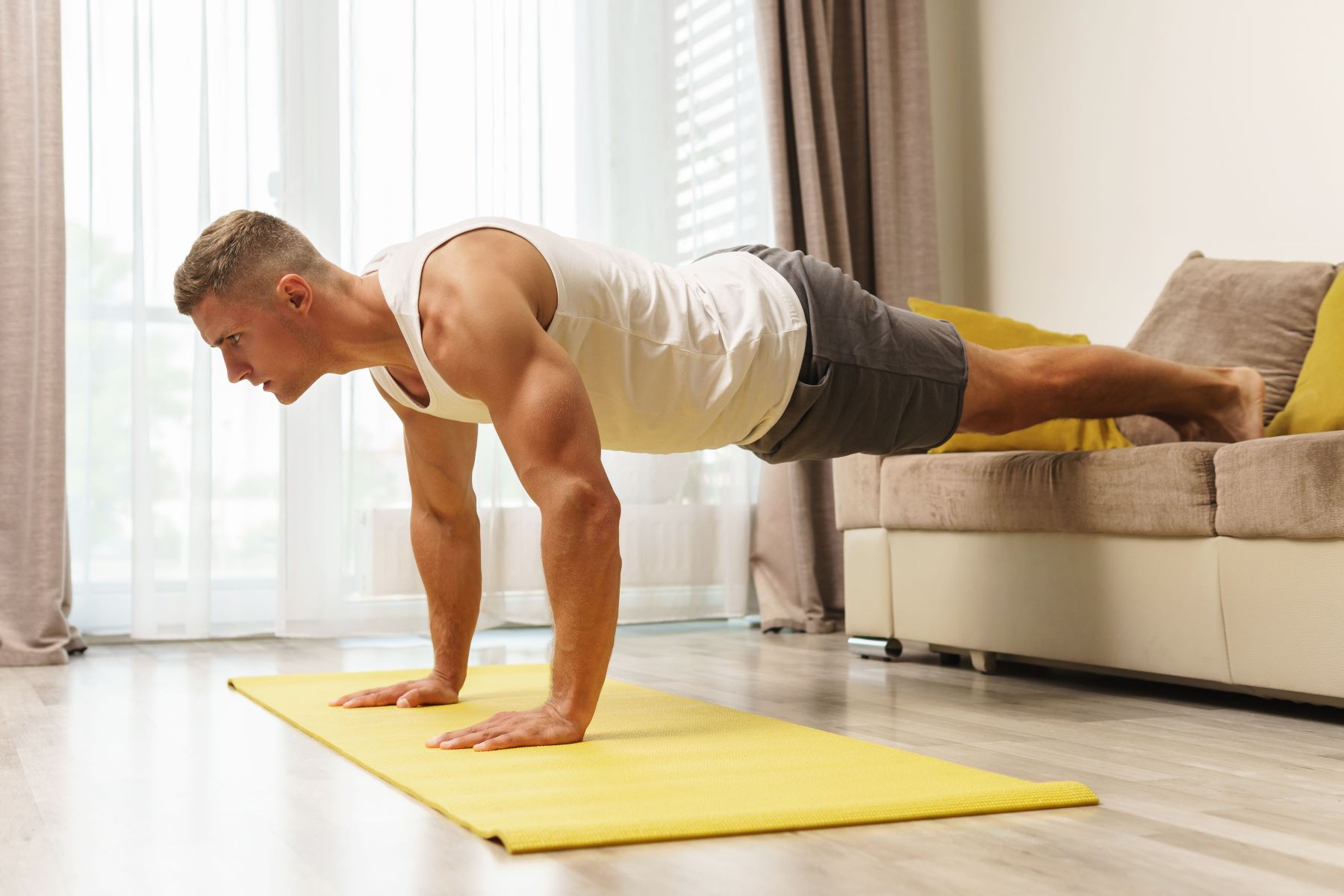

Featured
How To Workout Your Pecs At Home
Modified: August 19, 2023
Get a sculpted chest from the comfort of your home with our featured workout guide. Learn effective exercises to workout your pecs and achieve impressive results.
Introduction
Welcome to the world of home workouts, where you can sculpt and strengthen your pecs without even leaving your living room. Working out your pectoral muscles, commonly known as pecs, not only enhances your overall appearance but also contributes to better posture and upper body strength. Whether you are a fitness enthusiast looking to add variation to your routine or a beginner wanting to start your fitness journey, a home pec workout can be an excellent choice.
The convenience and flexibility of working out your pecs at home allow you to exercise whenever it suits your schedule. No more waiting for machines at the gym or crowded fitness classes. With a bit of creativity and the right exercises, you can effectively target your pecs from the comfort of your own home.
In this article, we will guide you through a comprehensive home pec workout routine that will help you develop those defined chest muscles you desire. We will also explore the benefits of working out your pecs at home, provide warm-up exercises to prepare your muscles, and offer alternative exercises for those without specific equipment.
Before diving into the workout routine, it is important to note that consistency and proper form are key. Be sure to listen to your body and start with weights and difficulty levels that are appropriate for your fitness level. Remember to warm up before each workout and stretch afterwards to prevent any injuries.
Now, let’s explore the many benefits of incorporating a home pec workout into your fitness routine.
Benefits of Working out Your Pecs at Home
When it comes to fitness, working out your pecs at home offers numerous advantages. Let’s explore some of the key benefits:
- Convenience: One of the major benefits of a home pec workout is the convenience it provides. You can exercise whenever you have the time, without having to commute to a gym or follow a set schedule. This flexibility allows you to easily fit your workout into your daily routine.
- Cost-effective: Another advantage of working out your pecs at home is that it can save you money in the long run. Gym memberships and personal training sessions can be expensive, but with a few simple pieces of equipment, such as dumbbells or resistance bands, you can effectively target your pec muscles without breaking the bank.
- Privacy and Comfort: Exercising at home provides a level of privacy and comfort that you may not have in a public gym. You can focus solely on your workout without feeling self-conscious or being distracted by others. This can boost your confidence and motivation to push yourself further.
- Variety of Exercises: Contrary to popular belief, a home pec workout doesn’t limit you to just a few exercises. With the right equipment and proper technique, you can incorporate a wide range of exercises that target different areas of your chest. This variety helps to keep your workouts interesting and ensures that you are challenging your muscles in different ways.
- Flexibility in Adjusting Intensity: When working out at home, you have the flexibility to adjust the intensity of your pec exercises. Whether you are a beginner starting with lighter weights or an advanced athlete looking to increase the difficulty, you have the control to customize your workout to your fitness level.
- Time-saving: Time is often a limiting factor when it comes to regular gym workouts. By exercising your pecs at home, you eliminate the need to travel to and from the gym, wait for equipment, or attend specific class times. This time-saving aspect allows you to efficiently fit in your workouts without sacrificing other commitments.
With these benefits in mind, it’s clear that working out your pecs at home can be a highly effective and efficient way to achieve your fitness goals.
Preparing for Your Home Pec Workout
Before diving into your home pec workout, it’s important to properly prepare your body. This will help prevent injuries and ensure that you get the most out of your workout. Here are some key steps to follow when preparing for your home pec workout:
- Set a Goal: Determine what you want to achieve with your pec workout. Whether it’s building muscle, improving strength, or enhancing your overall physique, having a clear goal in mind will motivate and guide your workout routine.
- Find a Suitable Space: Identify a designated space in your home where you can comfortably perform your pec exercises. Clear the area of any obstacles or distractions to create a safe and focused environment. Ideally, choose a space with enough room for you to move around freely.
- Gather Equipment: Depending on your preferred exercises, gather the necessary equipment. This could include dumbbells, resistance bands, a stability ball, or a workout bench. Having the right tools ready will allow for a smooth and uninterrupted workout session.
- Warm Up: Before engaging in any intense physical activity, it’s crucial to warm up your muscles. Spend 5-10 minutes performing dynamic movements such as arm circles, shoulder rolls, and torso twists. This helps increase blood flow, loosens up your joints, and prepares your muscles for the workout ahead.
- Stretch: After your warm-up, take a few minutes to stretch the muscles you will be targeting during your pec workout. Focus on stretches that target your chest, shoulders, and upper back. Hold each stretch for 15-30 seconds and remember to breathe deeply throughout.
- Hydrate: Proper hydration is essential during any workout. Drink water before, during, and after your home pec workout to stay hydrated and maintain optimal performance. Keep a water bottle nearby to sip on throughout your exercise session.
- Proper Attire: Wear comfortable workout clothes that allow for a full range of motion. Opt for breathable fabrics that wick away sweat to keep you cool and dry. Proper footwear with good support is also important to provide stability and prevent any foot or ankle injuries.
- Mindset: Lastly, approach your home pec workout with a positive mindset. Believe in your abilities and stay focused on your goals. Remember, consistency and dedication are key to achieving the results you desire.
By following these steps and adequately preparing for your home pec workout, you can ensure a safe and effective training session that will maximize your results.
Warm-Up Exercises
Before diving into your home pec workout, it’s crucial to warm up your muscles to prevent injuries and enhance performance. These simple warm-up exercises will help activate your chest muscles and prepare your body for the workout ahead:
- Arm Circles: Stand with your feet shoulder-width apart and extend your arms out to the sides. Begin making small circles with your arms, gradually increasing the size of the circles. Continue for 30 seconds, then reverse the direction for another 30 seconds.
- Shoulder Rolls: Stand tall and relax your arms by your sides. Raise your shoulders up towards your ears, then roll them back in a circular motion, squeezing your shoulder blades together. Repeat for 10 repetitions, then reverse the direction for another 10 repetitions.
- Pec Fly Stretch: Stand facing a wall or doorway. Place one hand on the wall at shoulder height, with your elbow slightly bent. Slowly rotate your body away from the wall, feeling a stretch in your chest and shoulder. Hold for 15-30 seconds on each side.
- Thoracic Spine Rotation: Begin in a seated position on a mat or the edge of a chair. Place your hands behind your head, elbows pointing out to the sides. Slowly twist your torso to one side, aiming to rotate your upper back and shoulders. Hold for a few seconds, then rotate to the opposite side. Repeat this movement for 10 repetitions on each side.
- Push-Up Position Hold: Get into a push-up position on the floor, with your hands shoulder-width apart and directly beneath your shoulders. Lower your body down until your elbows are bent at a 90-degree angle, then hold this position for 15-30 seconds. Keep your core engaged and maintain a straight line from your head to your heels.
- Scapular Retraction: Stand tall with your feet shoulder-width apart. Extend your arms out in front of you at shoulder height, palms facing down. Squeeze your shoulder blades together, pulling your arms back as far as you can. Hold for a few seconds, then release. Repeat this movement for 10 repetitions.
Performing these warm-up exercises will increase blood flow to your chest muscles, activate the surrounding muscles, and improve your range of motion. Remember to listen to your body and modify any exercises as needed to accommodate your fitness level and any pre-existing conditions.
Now that your body is warmed up and ready to go, let’s dive into the home pec workout routine!
Workout Routine for Your Pecs at Home
Now that you’ve properly warmed up, it’s time to dive into an effective home pec workout routine. This routine incorporates a variety of exercises that target your chest muscles from different angles. Remember to start with lighter weights or modifications if you’re a beginner and gradually increase the intensity as you progress. Here’s a sample workout routine for your pecs at home:
- Push-Ups: Begin with the classic push-up exercise, which targets your entire chest and engages your core. Start in a high plank position with your hands shoulder-width apart and directly beneath your shoulders. Lower your body down by bending your elbows, keeping your back straight and core engaged, and then push back up to the starting position. Aim for 3 sets of 10-12 reps.
- Dumbbell Chest Press: Lie down on a mat or a workout bench with a dumbbell in each hand, palms facing away from you. Extend your arms straight up towards the ceiling, with a slight bend in your elbows. Lower the dumbbells down towards your chest, making sure to keep your elbows at a 90-degree angle. Push the dumbbells back up to the starting position. Aim for 3 sets of 8-10 reps.
- Dumbbell Flyes: Lie down on a mat or a workout bench with a dumbbell in each hand, palms facing each other. Start with your arms extended directly above your chest, slightly bent at the elbows. Open your arms out to the sides in a wide “V” shape, feeling a stretch in your chest. Return your arms back to the starting position. Aim for 3 sets of 10-12 reps.
- Diamond Push-Ups: Position your hands close together on the floor, creating a diamond shape with your thumbs and index fingers. Lower your body down, keeping your elbows close to your sides, and push back up. This variation of the push-up targets your triceps and inner chest muscles. Aim for 3 sets of 8-10 reps.
- Resistance Band Chest Press: Attach a resistance band to a sturdy anchor point behind you. Stand facing away from the anchor point, holding the handles of the resistance band at chest level. Step forward to create tension in the band. Push your arms straight out in front of you, extending them fully, and then slowly release back to the starting position. Aim for 3 sets of 12-15 reps.
- Isometric Chest Squeeze: Stand tall with your feet shoulder-width apart and hold a medicine ball or a towel rolled up in front of your chest. Squeeze the ball or towel together with your chest muscles as hard as you can, then release. Repeat this squeezing motion for 10-12 reps.
Take short breaks between each set to allow your muscles to recover. Remember to maintain proper form and focus on engaging your chest muscles throughout each exercise. As you become more advanced, you can increase the weight or resistance to continue challenging your pecs.
Feel free to modify the number of sets and reps based on your fitness level and goals. Additionally, consider incorporating this pec workout routine into your overall fitness regimen at least twice a week to see noticeable results.
Now that you’re equipped with a diverse range of exercises, let’s explore some additional push-up variations and alternative exercises for your pec workout!
Push-Up Variations
Push-ups are a classic exercise that effectively target your chest muscles. However, there are various push-up variations that can add excitement and challenge to your home pec workout routine. By incorporating these variations, you can work different areas of your chest and engage additional muscle groups. Here are some popular push-up variations to try:
- Wide Grip Push-Ups: Place your hands wider than shoulder-width apart, which targets your chest muscles from a wider angle. This variation also engages your shoulders and triceps more.
- Close Grip Push-Ups: Position your hands close together, forming a triangle shape with your thumbs and index fingers. This variation primarily targets your triceps while still working your chest muscles.
- Decline Push-Ups: Elevate your feet on an elevated surface like a step or a sturdy chair, while keeping your hands on the ground. This variation emphasizes your upper chest and shoulders, providing an extra challenge.
- Incline Push-Ups: Place your hands on an elevated surface, such as a workout bench or a sturdy countertop, while keeping your feet on the ground. This variation targets the lower part of your chest and is a great modification for beginners or those with wrist issues.
- One-Arm Push-Ups: Extend one arm straight out to the side while performing a push-up with the other arm. This advanced variation intensifies the focus on your chest and strengthens your stabilizer muscles.
- Explosive Plyometric Push-Ups: Start with a regular push-up, then explosively push yourself up off the ground, allowing your hands to leave the floor for a brief moment. Land softly with your hands back in the starting position. This plyometric variation builds power and explosiveness in your chest muscles.
When incorporating push-up variations into your home pec workout routine, focus on maintaining proper form and performing each variation with control. Start with a few repetitions of each variation and gradually increase the number as you become more comfortable and stronger.
Remember to listen to your body and modify any push-up variations if needed. If traditional push-ups are too challenging, you can start with modified push-ups, where you keep your knees on the ground instead of your toes. As your strength increases, progress to performing full push-ups and then incorporate the various push-up variations mentioned above.
With these push-up variations, you can make your home pec workout more engaging, target different areas of your chest, and continuously challenge your muscles.
Now, let’s explore some alternative exercises that can be effective for working your pecs at home!
Bench Press Alternatives
The bench press is a popular exercise for targeting the chest muscles, but if you don’t have access to a bench or barbell, there are still plenty of effective alternatives that you can do at home. These exercises engage your chest muscles in similar ways, providing a challenging and effective workout. Here are some bench press alternatives:
- Push-Up with Shoulder Tap: Begin in a high plank position with your hands shoulder-width apart. Perform a push-up, then lift one hand off the ground and tap your opposite shoulder. Place your hand back on the ground and repeat with the other hand. This exercise not only targets the chest but also engages your core and shoulders.
- Dumbbell Floor Press: Lie flat on your back with your knees bent and feet flat on the ground. Hold a dumbbell in each hand with your elbows bent and your palms facing forward. Push the dumbbells upward until your arms are fully extended, then lower them back down to the starting position. This exercise provides a similar range of motion to a bench press while targeting your chest muscles.
- Resistance Band Press: Attach a resistance band to a sturdy anchor point behind you. Hold the handles of the resistance band at chest level, with your elbows bent and palms facing forward. Push your arms straight out in front of you until they are fully extended, then slowly release back to the starting position. This exercise mimics the pressing motion of a bench press and effectively works your chest muscles.
- Pike Push-Ups: Start in a high plank position with your hands directly beneath your shoulders and your hips lifted high, forming an inverted “V” shape. Lower your upper body towards the ground by bending your elbows, then push back up to the starting position. This exercise targets your upper chest and shoulders, providing a challenging alternative to the bench press.
- Chest Squeeze with Resistance Band: Hold a resistance band in front of you at chest level, with your hands positioned on either side of the band. Pull the band apart, squeezing your chest muscles together as you do so. Hold the squeeze for a few seconds, then release. This exercise effectively targets your chest muscles without the need for weights or a bench.
These bench press alternatives are versatile, effective, and can be done with minimal equipment. Incorporate them into your home pec workout routine to keep challenging your chest muscles and achieve remarkable results.
Remember to focus on proper form and technique for each exercise to ensure maximum effectiveness and minimize the risk of injury. Start with lighter weights or modifications if you’re a beginner, and gradually increase the difficulty as you become more comfortable and stronger.
Now that you have alternative exercises to replace the traditional bench press, let’s explore other ways to target your pecs at home using dumbbell fly exercises!
Dumbbell Fly Exercises
Dumbbell fly exercises are fantastic for targeting the chest muscles and creating a defined and sculpted look. These exercises focus on both the pectoralis major and pectoralis minor muscles, helping to increase strength and muscle development. If you have a pair of dumbbells at home, here are some effective dumbbell fly exercises to incorporate into your pec workout:
- Dumbbell Chest Fly: Lie flat on a mat or a workout bench with a dumbbell in each hand, palms facing each other. Start with your arms extended directly above your chest, slightly bent at the elbows. Open your arms out to the sides in a wide “V” shape, feeling a stretch in your chest. Control the movement as you bring your arms back together, squeezing your chest muscles. Repeat for 3 sets of 10-12 reps.
- Incline Dumbbell Fly: Adjust a workout bench to an incline position, around 45 degrees. Lie back on the bench with a dumbbell in each hand, palms facing inward. Start with your arms extended above your chest with a slight bend at the elbows. Open your arms out to the sides in a wide arc until your upper arms are parallel to the floor, feeling the stretch in your chest. Contract your chest muscles as you bring the dumbbells back up to the starting position. Aim for 3 sets of 8-10 reps.
- Decline Dumbbell Fly: Adjust a workout bench to a decline position, around 30 degrees. Lie back on the bench with a dumbbell in each hand, palms facing inward. Start with your arms extended above your chest with a slight bend at the elbows. Open your arms out to the sides in a wide arc until your upper arms are parallel to the floor. Slowly return to the starting position, focusing on the contraction of your chest muscles. Perform 3 sets of 10-12 reps.
- Single-Arm Dumbbell Fly: Lie back on a mat or a workout bench with a single dumbbell in one hand, palm facing inward. Start with your arm extended directly above your chest, with a slight bend at the elbow. Open your arm out to the side while maintaining a slight bend in the elbow, feeling the stretch in your chest. Control the movement as you bring your arm back up, squeezing your chest muscles. Perform the specified number of reps on one side before switching to the other side. Aim for 3 sets of 8-10 reps per side.
- Reverse Dumbbell Fly: Stand with your feet hip-width apart and a dumbbell in each hand, palms facing each other. Bend forward at the waist, keeping your back straight and core engaged. Start with your arms hanging straight down, palms facing each other. Raise your arms laterally out to the sides, squeezing your shoulder blades together as you do so. Slowly lower the dumbbells back down. Perform 3 sets of 10-12 reps.
When performing dumbbell fly exercises, it’s important to maintain proper form. Keep your shoulders down and relaxed, and focus on engaging your chest muscles throughout the movement. Avoid using excessive momentum and control the weights at all times to maximize the effectiveness of the exercise.
Choose a weight that challenges you but still allows you to maintain proper form. As you become more comfortable with the exercises, you can gradually increase the weight to continue stimulating muscle growth.
Incorporating dumbbell fly exercises into your home pec workout routine will help you achieve a well-rounded and sculpted chest while targeting the different areas of your pectoral muscles.
Now that we’ve explored dumbbell fly exercises, let’s discover how you can effectively target your pecs at home using resistance bands!
Chest Press with Resistance Bands
If you’re looking for an effective way to target your pecs at home without the need for dumbbells or barbells, resistance bands are a versatile and affordable option. They provide constant tension throughout the movement, challenging your chest muscles and promoting muscle growth. Here’s how to perform a chest press with resistance bands:
- Anchor Setup: Securely attach the resistance band to a sturdy anchor point at chest height. This can be a doorknob, a pillar, or any stable structure that can withstand the tension of the band.
- Positioning: Stand facing away from the anchor point, holding the handles of the resistance bands in each hand. Position yourself so that the band has tension when your arms are extended forward at chest level.
- Stance: Stand with your feet shoulder-width apart, maintaining a slight bend in your knees for stability.
- Starting Position: Keep your back straight and core engaged. Hold the handles of the resistance bands with your palms facing down, positioned near the sides of your chest.
- Movement: Push forward and straighten your arms in front of you, extending them fully. Squeeze your chest muscles as you push outward, feeling the resistance from the bands. Pause briefly at the end of the movement to maximize the contraction.
- Return: Slowly release the tension on the resistance bands and bring your hands back to the starting position, allowing your chest muscles to stretch.
- Repetitions and Sets: Aim for 3 sets of 10-12 repetitions, adjusting the tension of the resistance bands to suit your strength level. Gradually increase the resistance or the number of repetitions as you progress.
When performing the chest press with resistance bands, focus on maintaining proper form and engaging your chest muscles throughout the movement. Keep your shoulders back and down, and avoid hunching or straining your neck. Control the resistance bands at all times and move in a slow and controlled manner for optimal muscle stimulation.
Resistance bands come in different levels of resistance, so choose a band that provides enough tension to challenge your chest muscles without sacrificing proper form. You can increase or decrease the tension by adjusting the length of the band or using a band with a different resistance level.
By incorporating chest press exercises with resistance bands into your home pec workout routine, you can effectively engage your pectoral muscles and build strength and definition in your chest.
Now that we’ve covered resistance band exercises, let’s explore some additional tips to maximize your home pec workout.
Tips for Maximizing Your Home Pec Workout
To get the most out of your home pec workout and optimize your results, consider incorporating these tips into your routine:
- Focus on Proper Form: Ensure that you maintain proper form throughout each exercise. Proper form ensures that you’re targeting the intended muscle groups and reduces the risk of injury. Avoid using momentum or excessive weight to perform the exercises and instead focus on controlled, deliberate movements.
- Progressively Increase the Intensity: As you become comfortable with your routine, gradually increase the intensity of your workouts. This could include adding more weight, performing more repetitions, or trying more challenging variations of the exercises. Progressive overload is essential for continued muscle growth and strength development.
- Include Rest Days: Allow your muscles time to recover and rebuild by incorporating rest days into your workout schedule. Rest is necessary for muscle growth and prevents overtraining. Aim for at least one or two rest days per week, depending on your fitness level and individual needs.
- Eat a Balanced Diet: Proper nutrition is crucial for muscle growth and recovery. To support your home pec workout, consume a balanced diet that includes lean protein sources, healthy fats, complex carbohydrates, and plenty of fruits and vegetables. Stay hydrated before, during, and after your workouts to support optimal performance.
- Stretch and Cool Down: After completing your home pec workout, be sure to cool down and stretch your chest muscles. This helps reduce post-workout muscle soreness and increases flexibility. Focus on stretching exercises that target your chest, shoulders, and upper back, holding each stretch for 15-30 seconds.
- Track Your Progress: Keep a workout journal or use a fitness app to track your progress. Note down the exercises, sets, reps, and weights used for each workout. This allows you to identify improvements, set new goals, and stay motivated as you see your progress over time.
- Stay Consistent: Consistency is key when it comes to achieving your fitness goals. Stick to a consistent workout routine, aiming for at least two to three chest workouts per week. Consistency, combined with proper nutrition and rest, will yield the best results.
Remember that everyone’s fitness journey is unique, so listen to your body and adjust your routine according to your abilities and goals. Stay patient, stay motivated, and celebrate your progress along the way.
By incorporating these tips into your home pec workout routine, you can maximize the effectiveness of your workouts and achieve the strong, defined chest you desire.
Now that you’re armed with valuable tips, you’re ready to embark on your home pec workout journey. Stay consistent, stay committed, and enjoy the process of sculpting your chest muscles right at home!
Conclusion
Congratulations on gaining valuable insights into how to effectively work out your pecs at home! By incorporating the variety of exercises mentioned in this article, you can strengthen and sculpt your chest muscles without the need for expensive gym equipment or memberships.
From the convenience and cost-effectiveness of home workouts to the versatility of push-up variations, dumbbell fly exercises, and resistance band workouts, you have a plethora of options to target your pecs. It’s important to remember that consistency, proper form, and gradually increasing the intensity are key elements for achieving your desired results.
Additionally, by following the tips provided, such as focusing on proper form, progressively increasing the intensity, and balancing your workouts with rest days, you can optimize your home pec workouts and enhance muscle growth and strength.
Remember, every fitness journey is unique, and it’s essential to listen to your body, set realistic goals, and stay committed to your routine. Celebrate small victories along the way and keep track of your progress to stay motivated and inspired.
Whether you are a fitness enthusiast looking to add variation to your routine or a beginner starting your fitness journey, you now have the knowledge and tools to embark on a successful home pec workout routine. Embrace the convenience, privacy, and flexibility of working out at home, and enjoy the satisfaction of seeing your chest muscles develop and grow.
Get ready to feel stronger, more confident, and proud of the hard work you put into sculpting your chest. So go ahead, grab those dumbbells, resistance bands, or just your own body weight, and start working on those pecs today!

